Historic city's original boundary excavated
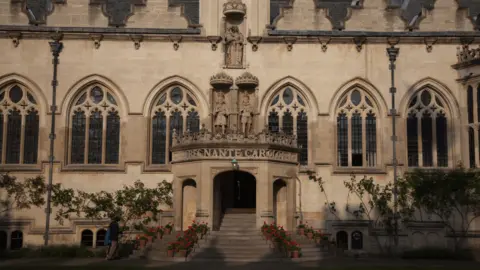 Oriel College
Oriel CollegeDiscoveries made during excavations in Oxford have confirmed the original defensive perimeter of the then Anglo-Saxon town.
An area around Oriel College was investigated by Oxford Archaeology during refurbishment works on its bar and kitchens.
Experts found the remains of a ditch, indicating where the defences originally stood, confirming that Oxford in about 900AD was much smaller than the medieval town it went on to become.
Senior project manager Ben Ford, called the discovery "extremely exciting".
Excavations outside the Bodleian Library in 1899 previously revealed a section of wall thought to be the original town’s north-eastern corner.
The discovery at Oriel College appears to confirm the original eastern defensive line.
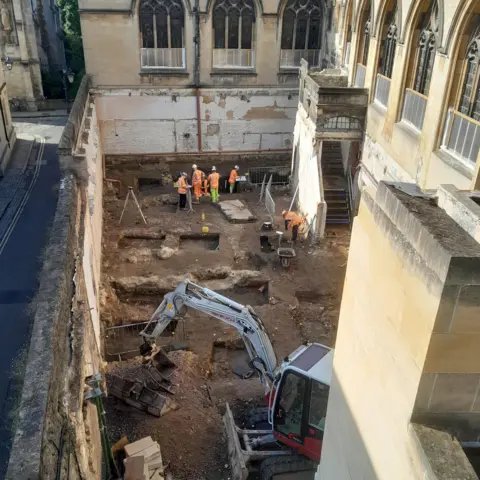 Oriel College
Oriel CollegeOxford Archaeology said it gave "credibility" to theories that the early fortified Oxford was smaller and had a "square perimeter built by the Anglo-Saxons according to the model of walled Roman towns such as Winchester".
Oxford was part of a defensive network throughout the Anglo Saxon Kingdoms of Mercia and Wessex against the Vikings.
Mr Ford added: "Using specialist equipment to extract cores of earth from deep below the existing ground level we have identified the profile of a large infilled ditch which is over 3m (9.8 ft) deep and about 20m (66ft) wide running north to south.
"There is no sign of these defences now because over time the ditch had filled up with deposits and then been built over."
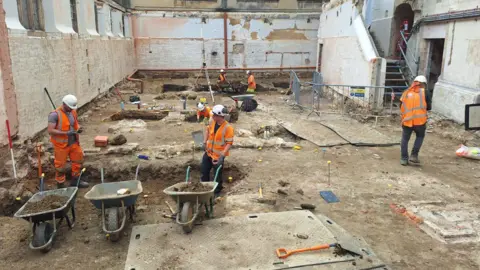 Oriel College
Oriel College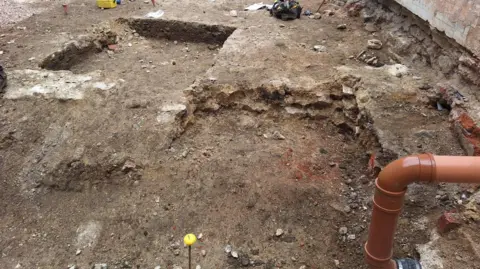 Oriel College
Oriel CollegeFragments of charred plants in the ditch have been dated and show it was constructed around 880 to 950 AD, about the time Oxford is thought to have been founded.
"We hope that further study will obtain a more accurate date and solve this fundamental question about the origins of our modern city," Mr Ford said.
Oxford City Council archaeologist David Radford said: "This really is a significant breakthrough that helps us get to the next level in terms of understanding Oxford’s emergence and evolution on the boundary between the kingdoms of Wessex and Mercia in the context of the Viking threat from the north in the 9th and 10th centuries."
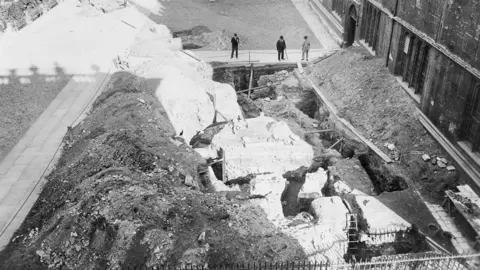 OAHS Oxford Archaeological and Historical Society
OAHS Oxford Archaeological and Historical Society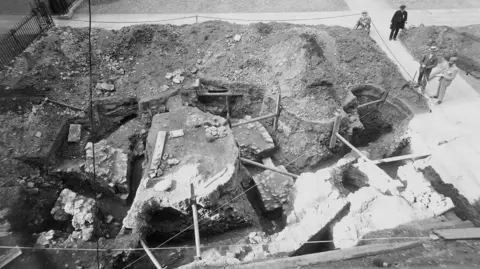 OAHS Oxford Archaeological and Historical Society
OAHS Oxford Archaeological and Historical SocietyColin Bailey, Oriel College’s master of works, said the refurb at the site had "provided a rare opportunity to excavate an area that has never been excavated before".
He added: "It is fantastic to see this resolve a century-old debate.
"The city of Oxford has such an intriguing history.
"I find it extraordinary that, despite nearly 700 years of continuous existence at the same site, Oriel College continues to surprise us with new discoveries about the ground on which it is built."
You can follow BBC Oxfordshire on Facebook, X (Twitter), or Instagram.
